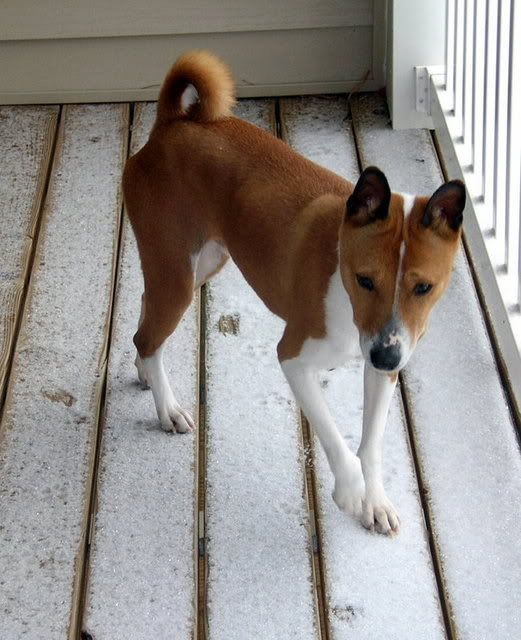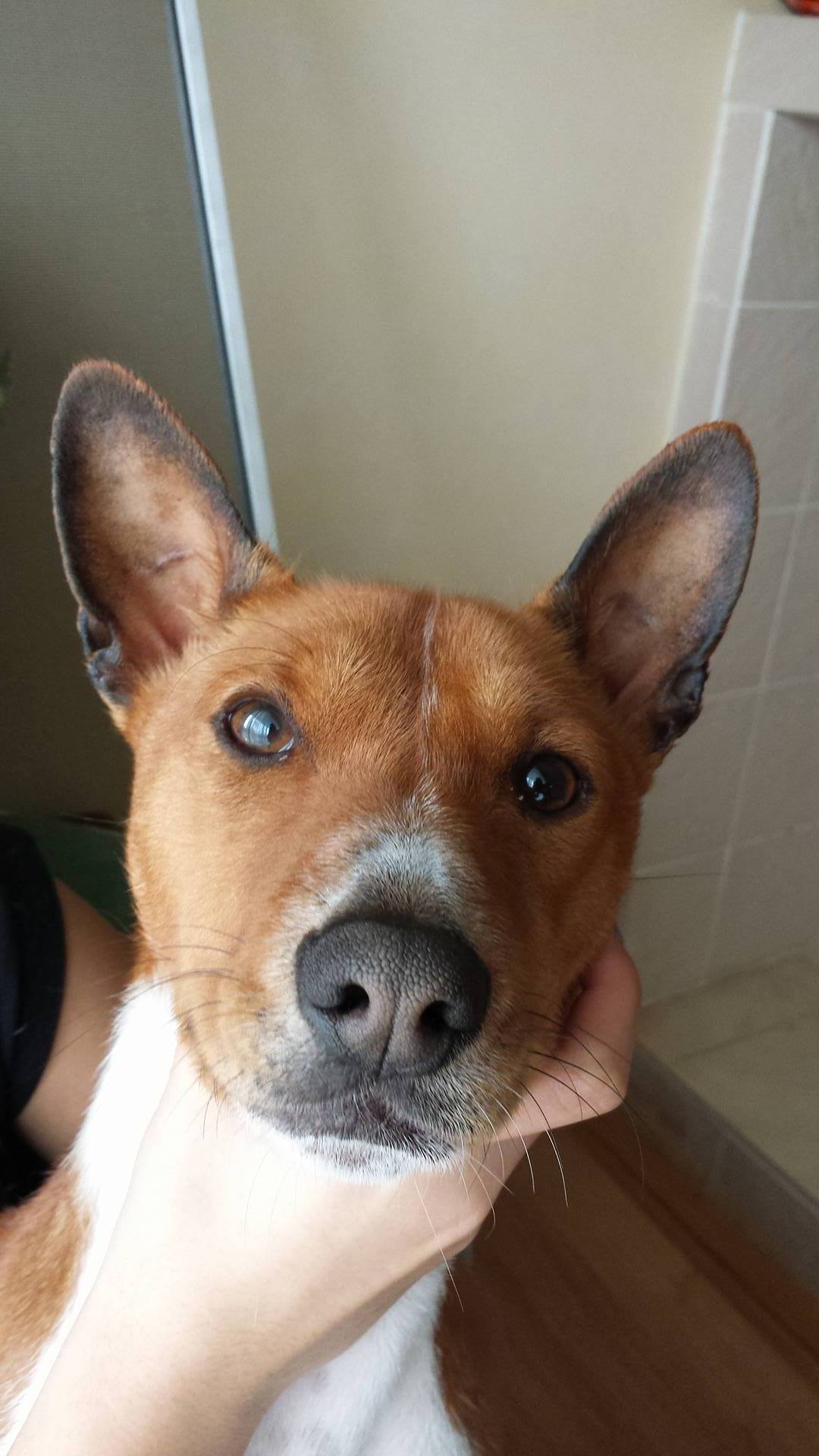Blackening ears anyone?
-
Thanks for the reply - what exactly is fly strike? Is it something that should or can be treated? I have to say, Woody isn't outside all that much - one long walk and one short one and 23 hours of sleeping if he had his way :D The blackening effect is in the form of a gradual increase over several months and I wondered if it was something to do with the ageing process? Thanks - Naomi
-
Thanks for the reply - what exactly is fly strike? Is it something that should or can be treated? I have to say, Woody isn't outside all that much - one long walk and one short one and 23 hours of sleeping if he had his way :D The blackening effect is in the form of a gradual increase over several months and I wondered if it was something to do with the ageing process? Thanks - Naomi
If he is not out that much then I wouldn't think that would be the problem. I can tell you that I have a house full of elders… no blacking of the ears or hair loss.... Not sure what it could be on Woody
-
Ok thanks…will follow up with the vet I think and keep you posted if I find out anything - Naomi
-
Ok thanks…will follow up with the vet I think and keep you posted if I find out anything - Naomi
Can you post a picture of what his ears look like?
-
Jazzy's ears are usually a bit black, and in the winter months they lose hair and get "scaly" {for lack of better word}. I can actually scrape hair off around the edges and it has black crust around the bottom.
When I only had one Basenji, several breeders at shows commented, "You need another Basenji; they take care of that for each other". I was told it is sometimes called "Winter Ear".
Now I do have two Basenjis,but she still gets it. The crusting wasn't as bad this year, but her ears are still more black than red. I'm sure if you look at photos of Jazzy you will see that the inside of her ears is black, and the outer side is also black in Winter months.
-
Brando's ears are slightly black on the inside (and he has Ruby as a cleaner b :D ). He has no crust at all, and the texture of that area is the same as the rest of the inside of his ears. It isn't dirt, I just always assumed it was his natural pigment because he's been like that ever since I first met him over a year ago. He has no crust around the tips or on the inside or outside…in fact his coat and skin are beautiful and the vet just commented on that when he was in having his lyme booster on Friday.
This picture is a little dark, because they aren't anywhere near as dark as that. In fact, he is very light colored overall, including his eyes (I always joke that he's a fair haired scandinavian boy because he's from Finland).

To the breeders, do some b's just naturally have a different colored pigment in their ears…ever seen that? It isn't hair and he isn't tri-factored. Hmmm...
-
Yeh, when we first rescued Miles, his ears were damaged from the cold. Here are some pics throughout the healing process… I cleaned them out once a week and also put neosporin on them daily. It took a couple of months, but they are as good as new now. ;)
February 2007

February 2007

And getting better… June 2007

You can get some gentle ear cleaning solution at the vet's. I also sometimes used a cotton ball with hydrogen peroxide. Sometimes his ears would flake off - especially at first– all that black crusty edge. Yuck. I also would wipe them with wintergreen smelling alcohol occassionally. But neosporin every day seemed to be the biggest help.
-
That looks like hyper-pigmentation. Skin pigment can change a lot with age. Some get really spotty, some get darkening, some noses get more pink, etc. Doesn't necessarily mean anything is wrong!
There is a medical condition that has to do with circulation (my friend's beagle mix has it) and causes the ear tips to darken and sometimes get crusty/scaly. There is really that effective nothing you can do for it. She took him to a dermatologist and ran every test she could think of and now just manages it topically when it flairs up.
If he were my dog I'd have the vet check it out just to be safe but I really doubt they can do much.
-
replied to CrazySenji on last edited by
@CrazySenji I agree that this is nothing major because it does not seem to bother him in any way, but my dog is only 14 months old so does it actually have something to do with age? My only problem with this is that it doesn't look very appealing especially on a beautiful dog. Thank you very much for the info! I will definitely go out and talk to my vet and see what we can do about it.
-
replied to potanamu on last edited by
@potanamu
It could be a lot of things... from yeast to even some autoimmune issues. I'd take your dog in, let them check it. If they find nothing, good. My basenji had darkening in her ears but they felt it was steroid and autoimmune related. They looked dark and dirty, but they weren't.Check out these, mostly page 2
http://veterinarynews.dvm360.com/ear-edge-dermatitis-look-beyond-scabies -
replied to potanamu on last edited by
@potanamu My 1st B got that when the seasons changed. By late Fall, I noticed that there was more black on the edges, as well, there was more hair. My Vet at that time (he was an excellent Vet! Died from cancer before my 1st. B passed away), told me that, Sometime's a sudden change in a dogs climate or a move to another State, could cause a natural phenomenon in dogs with prick ears or ears that are exposed all year, causing them to grow some extra hair inside the ears as well as growing an extra layer (or more) of skin, as extra protection for the ear inside. When the climate changes back to a warmer temp, just as the extra protection was added by the dogs body ~ it is also sloughed off when it's no longer needed. When the dogs body was adding the extra protection, besides adding more hair & skin layers... ear wax was also increased in between the layers. The wax worked like insulation between skin layers during the cold & then aided in the sloughing of the extra skin & hair when the temps went back up again. I told him, my girl, Darling Darla, had this going on most all year long!! He said that she would get rid of a lot of it, as long as her toe nails were kept short & smooth but, if it bothered me that much ... have her sit/lay next to me & get her used to me doing ear rubs with my fingers, wiping my fingers off on a towel/wash-cloth often. I was to start about half way down the ear, thumb inside the ear, index & middle finger on back of ear & just gently keep pulling upwards. Just don't do it so long in each ear that it caused chapping. I'd get bits of hair & junk & by summer, it would be gone!! The Vet also told me that if I thought there was infection in the ear ~ stick my nose in her ear & smell it! If there was a bad odor, bring her in. No smell...no problem! She loved the ear rubs & attention! I loved her clean looking B ears again!! To this day, I still stick my nose in the B's ears & smell them!!
-
So glad to see this. My basenji also has this. She is 10.5 years old and I would say it started in the last year. Also has a little lightening of the nose.
-
My 2 year has black crusty ears, hair loss, swollen joints,
Along with other things, since the age of 8 weeks,she has been to 3 Specialist, she has Lupus, one Vet called her a lemon.
Now on a low protein diet.I would say could be allergys.

